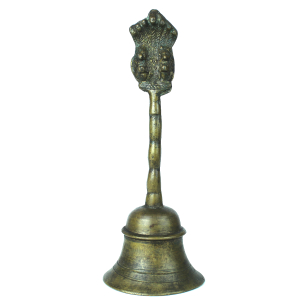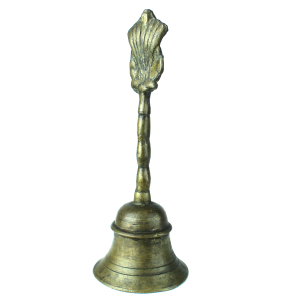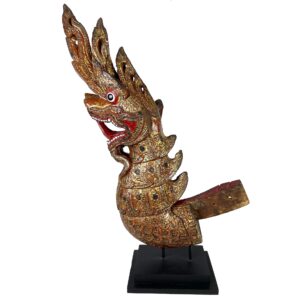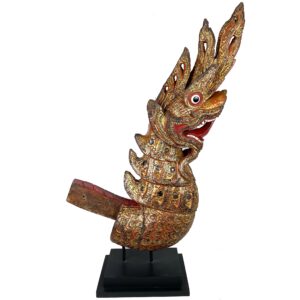-


$295.00
H: 10” Dia: 3.75” | FREE SHIPPING within Continental U.S.!
This Hindu prayer bell was likely placed on a home or temple altar and used in daily puja rituals. It has a smooth and undecorated body with only incised parallel rings circling plain surfaces and is topped by a Garuda pair sheltered by Naga hoods. Garuda, Vishnu’s mythical winged bird mount, and Naga, a seven-headed hooded serpent, are natural enemies but when they are represented together, they symbolizes peace, a very appropriate adornment for the tranquility and serenity elicited by the pleasing sounds of a prayer bell.
-


$1,133.00
H: 32″ W: 20″ D: 7.5″ SHIPPING INFORMATION REQUIRED. CONTACT US AT 213-568-3030
This exceptional naga was one of two that comprised a gong stand. Gongs were used in Burma for both ceremonial and musical purposes in religious, state, or secular settings. A protection figure, this naga is a superb carving elaborately decorated with gold lacquer and pigmentation. He opens his mouth wide bearing mother-of-pearl teeth and a curled blood red mouth and tongue to drive away malevolent spirits, also reinforced by the large glaring eyes circled in red. On first glance it is menacing, but its history as a protector of Buddha Shakyamuni make it prized as a fanciful, gleeful guardian. His scales are arched relief designs of mixed lacquer and ash and they are highlighted with inset cut mirrors and green sequin-like glass “jewels.” It is mounted on a museum quality stand and is in excellent condition for its age and use despite missing an ear.
End of content
End of content




